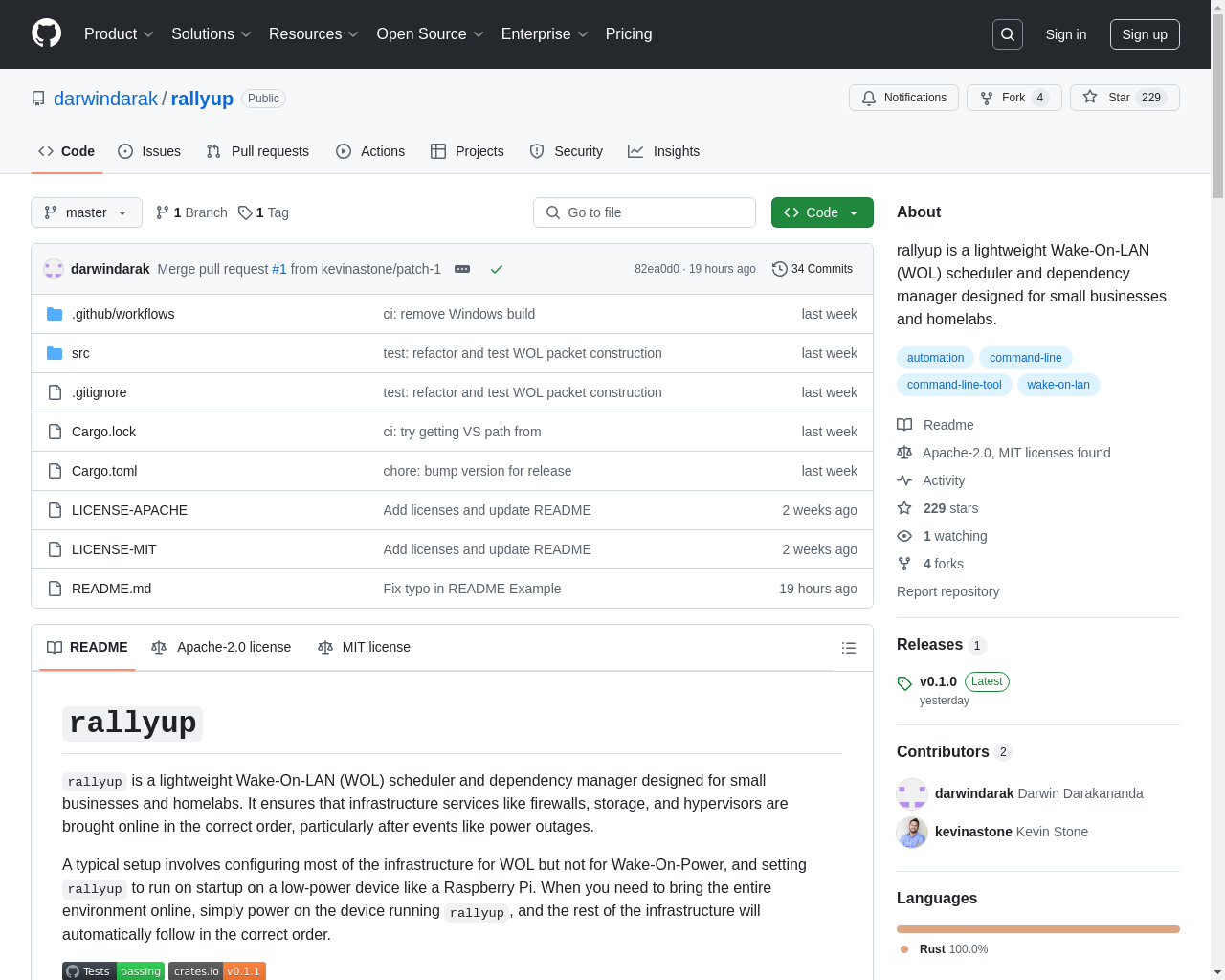

Highlight 1
The configuration via YAML files is intuitive and allows for easy management of server dependencies.
Highlight 2
The built-in health checks enhance the reliability of the boot sequences by ensuring that each server is operational before moving on to the next.
Highlight 3
Its lightweight nature allows it to run on low-resource hardware, like Raspberry Pi, making it accessible for various users.

Improvement 1
The documentation could be more extensive, with examples and use cases to assist new users in getting started quickly.
Improvement 2
The user interface for configuration could be made more user-friendly, potentially with a GUI to complement the YAML setup.
Improvement 3
Increased support for error handling or notifications would improve user experience, especially in complex environments.
Product Functionality
Consider implementing a GUI for easier setup and configuration management, helping less technical users to navigate the tool more effectively.
UI & UX
Enhance the UI to provide a more modern and user-friendly experience, with visual feedback on server statuses and clearer navigation options.
SEO or Marketing
Utilize SEO best practices by optimizing website content for relevant keywords and integrating a blog to share updates, guides, and community projects, which could improve visibility and engagement.
MultiLanguage Support
Introduce multi-language support to cater to a broader audience, allowing users from different regions to configure and use the tool in their native language.
- 1
How can I configure server dependencies in Rallyup?
You can configure server dependencies by creating a YAML file where you specify the startup order of your servers and any dependency relationships.
- 2
Does Rallyup support health checks for servers?
Yes, Rallyup includes built-in health checks that can verify server status using HTTP requests, open port checks, or custom shell commands.
- 3
Can I run Rallyup on a Raspberry Pi?
Absolutely! Rallyup is lightweight enough to operate on a Raspberry Pi or similar low-resource devices.
